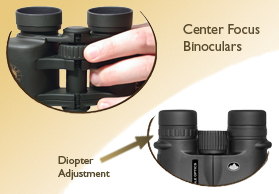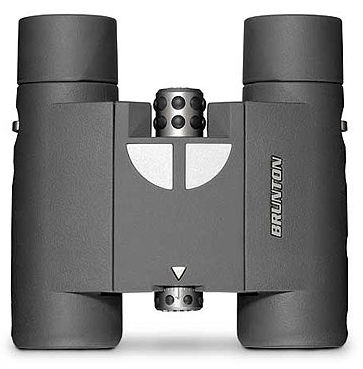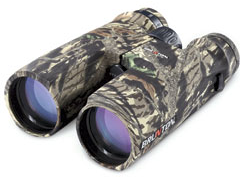by Joe "Woods Goods and Stuff"
Binocular Review - Optical Design
Galilean binoculars
Almost from the invention of the telescope in the 17th century the advantages of mounting two of them side by side for binocular vision seems to have been explored. Most early binoculars used Galilean optics; that is they used a convex objective and a concave eyepiece lens. The Galilean design has the advantage of presenting an erect image but has a narrow field of view and is not capable of very high magnification. This type of construction is still used in very cheap models and in "opera glasses" or theater glasses.
Porro prism binoculars
Named after Italian optician Ignazio Porro who patented this image erecting system in 1854 and later refined by makers like Carl Zeiss in the 1890's, binoculars of this type use a Porro prism in a double prism Z-shaped configuration to erect the image. This feature results in binoculars that are wide, with objective lenses that are well separated but offset from the eyepieces. Porro prism designs have the added benefit of folding the optical path so that the physical length of the binoculars is less than the focal length of the objective and wider spacing of the objectives gives better sensation of depth.
Roof prism binoculars
Binoculars using Roof prisms may have appeared as early as the 1880s in a design by Achille Victor Emile Daubresse. Most roof prism binoculars use either the Abbe-Koenig prism (named after Ernst Karl Abbe and Albert Koenig and patented by Carl Zeiss in 1905) or Schmidt-Pechan prism (invented in 1899) designs to erect the image and fold the optical path. They are narrower, more compact, and more expensive than those that use Porro prisms. They have objective lenses that are approximately in line with the eyepieces.
Porro vs. Roof prisms
Aside from the difference in price and portability noted above these two designs have effects on reflections and brightness. Porro-prism binoculars will inherently produce an intrinsically brighter image than roof-prism binoculars of the same magnification, objective size, and optical quality, as less light is absorbed along the optical path. However, as of 2005, the optical quality of the best roof-prism binoculars with up-to-date coating processes as used in Schmidt-Pechan models is comparable with the best Porro glasses, and it appears that roof prisms will dominate the market for high-quality portable binoculars in spite of their higher price.The major European optical manufacturers (Leica, Zeiss, Swarovski) have discontinued their Porro lines; Japanese manufacturers (Nikon, Fujinon, etc.) may follow suit.
Binocular Review - Optical Design
by Joe "Woods Goods and Stuff"




